“Made in Trollhättan by trolls.” That was the sticker that offbeat Saab owners affixed to their quirky little cars from Sweden back in the 1950s and ’60s.
That was easy to believe, seeing the strange-looking vehicles as they burbled along, trailing a thin haze of bluish smoke from their 2-cycle engines. Trolls must have been involved.
Actually, Saab automobiles were created after World War II by the “Svenska Aeroplan Aktiebolaget” (SAAB), an aircraft company pretty much idled after building planes for the war and casting about for a civilian product to stay afloat.
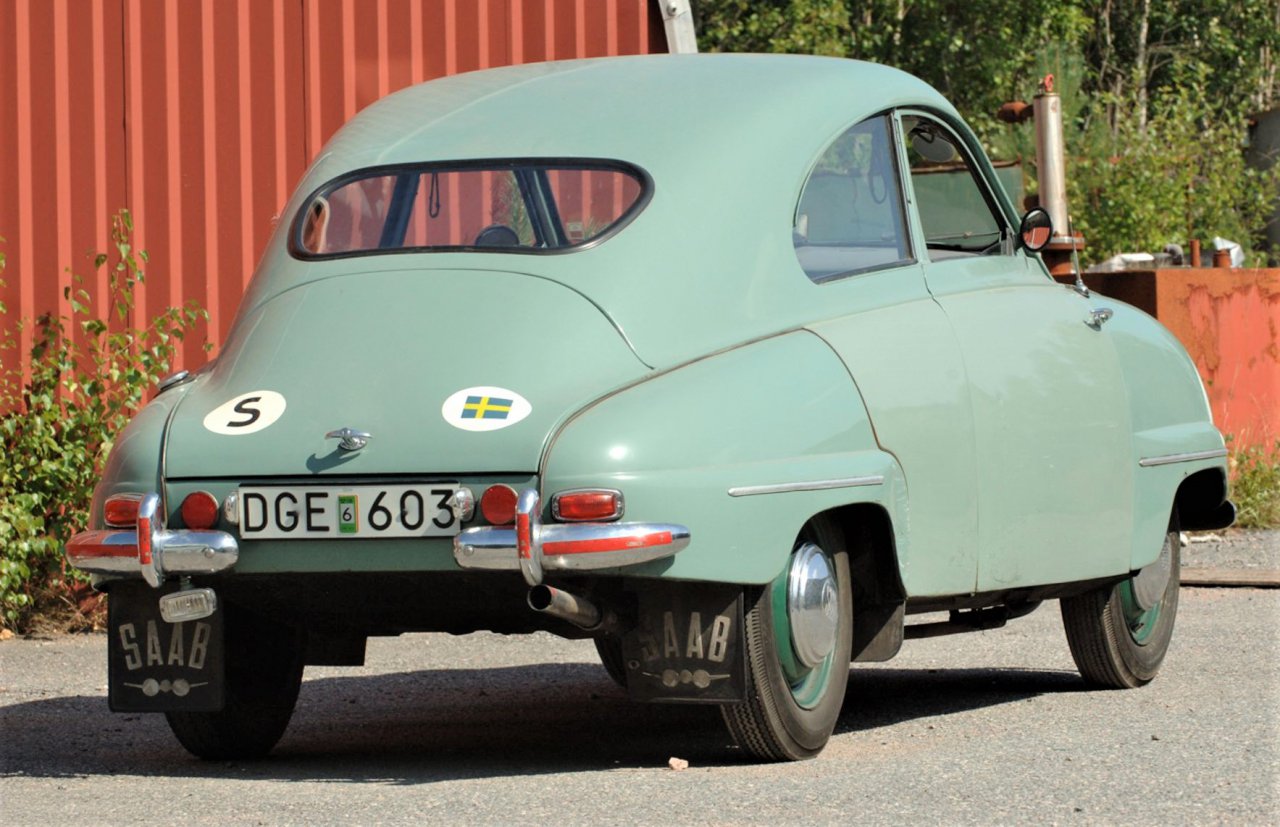
An online auction ends today (September 3) for the very first production Saab 92, chassis No. 4, that was used by the manufacturer from 1948-52 as a test car before being sold to the public.
“This is the holy grail for Saab fans in the world,” according to a news release from the auctioneer, Bilweb of Sweden. “This particular model is actually the first ‘production’ Saab 92 car built after three prototypes.”
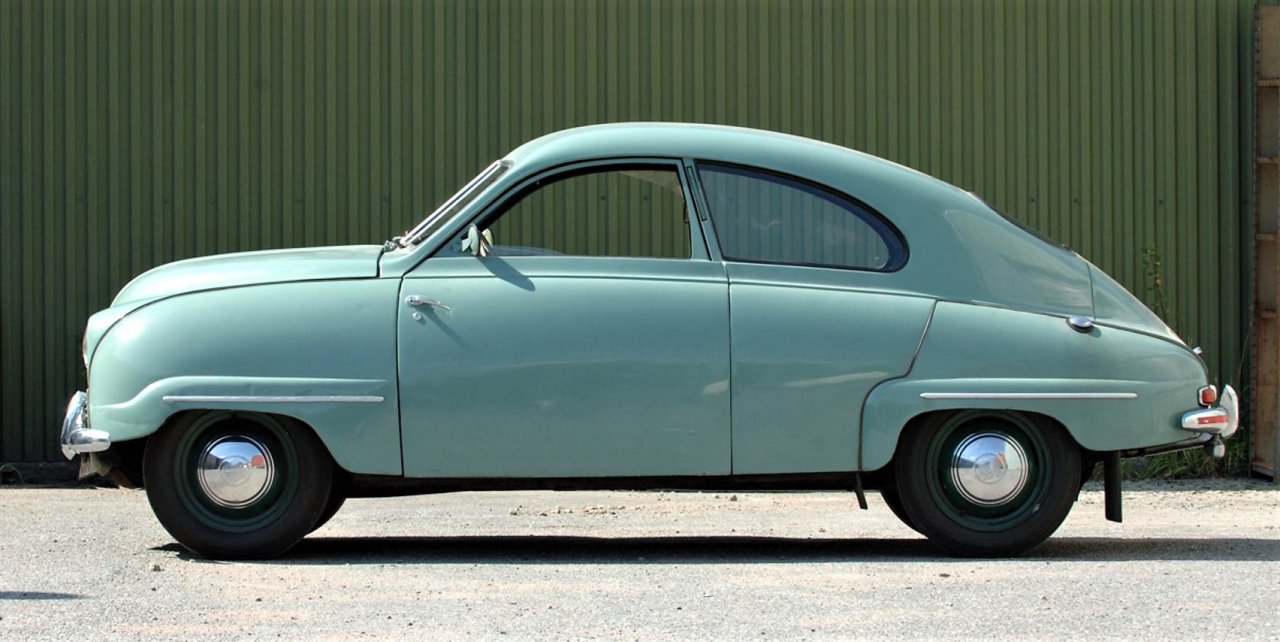
The car is valued by the auction company at 500,000 Swedish Krona, which sounds like an unfathomable amount until you do the conversion to US dollars and find that equates to about $57,000. A Krona is worth a tad over 11 cents.
“This Saab 92 is the most interesting Swedish car we have put up for auction so far, and we have already been contacted by collectors from both Switzerland and the USA,” auction head Michael Luft said in a news release.
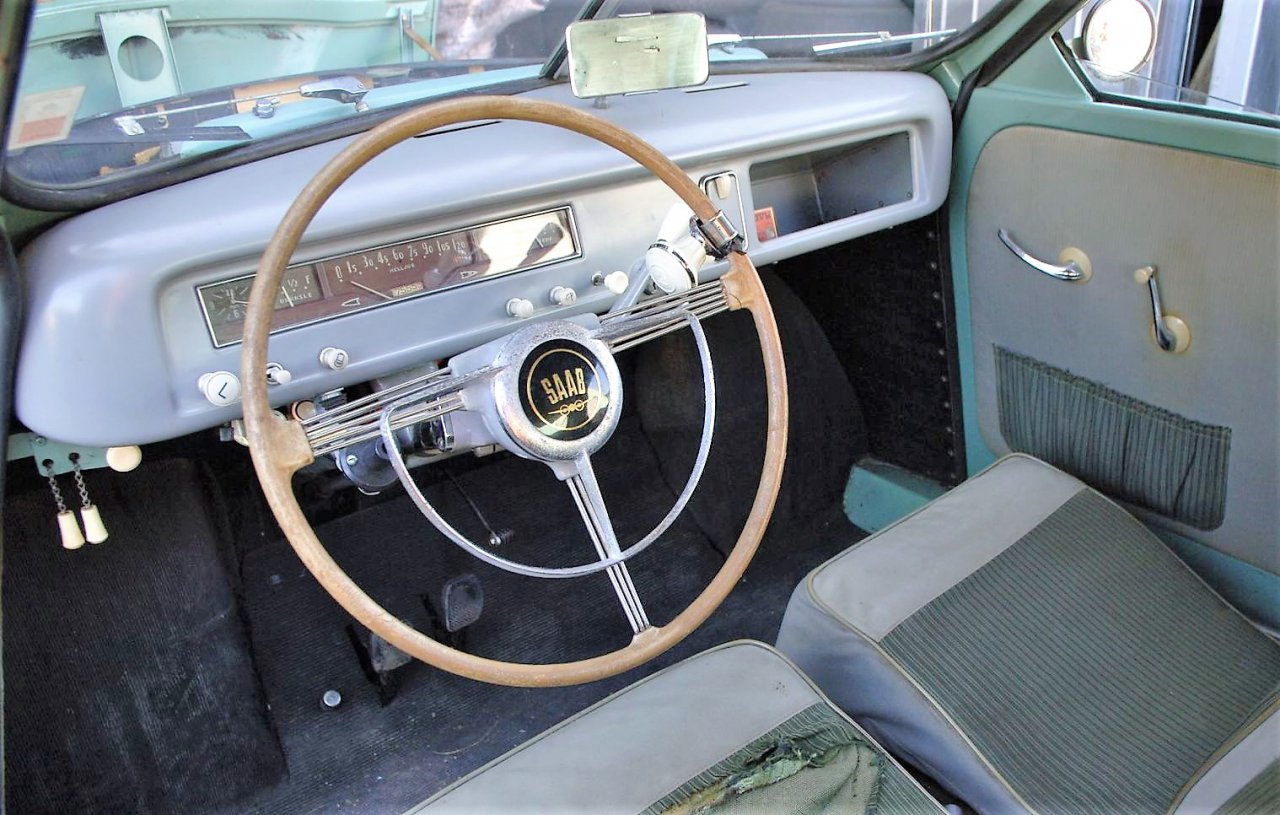
The first production Saab 92 was slightly improved over the original prototype shown to the company brass in June 1946. That first prototype, the so-called “original Saab,” is safely ensconced at the SAAB Museum, which is of course located in Trollhättan, Sweden.
The auction Saab is such an appealing-looking critter, the highly aerodynamic form seeming like an airplane cabin on wheels. The purposeful styling showed the original intent of the aircraft engineers who designed it to be unique yet simple and inexpensive, at a time when Europe was starving for basic vehicles.
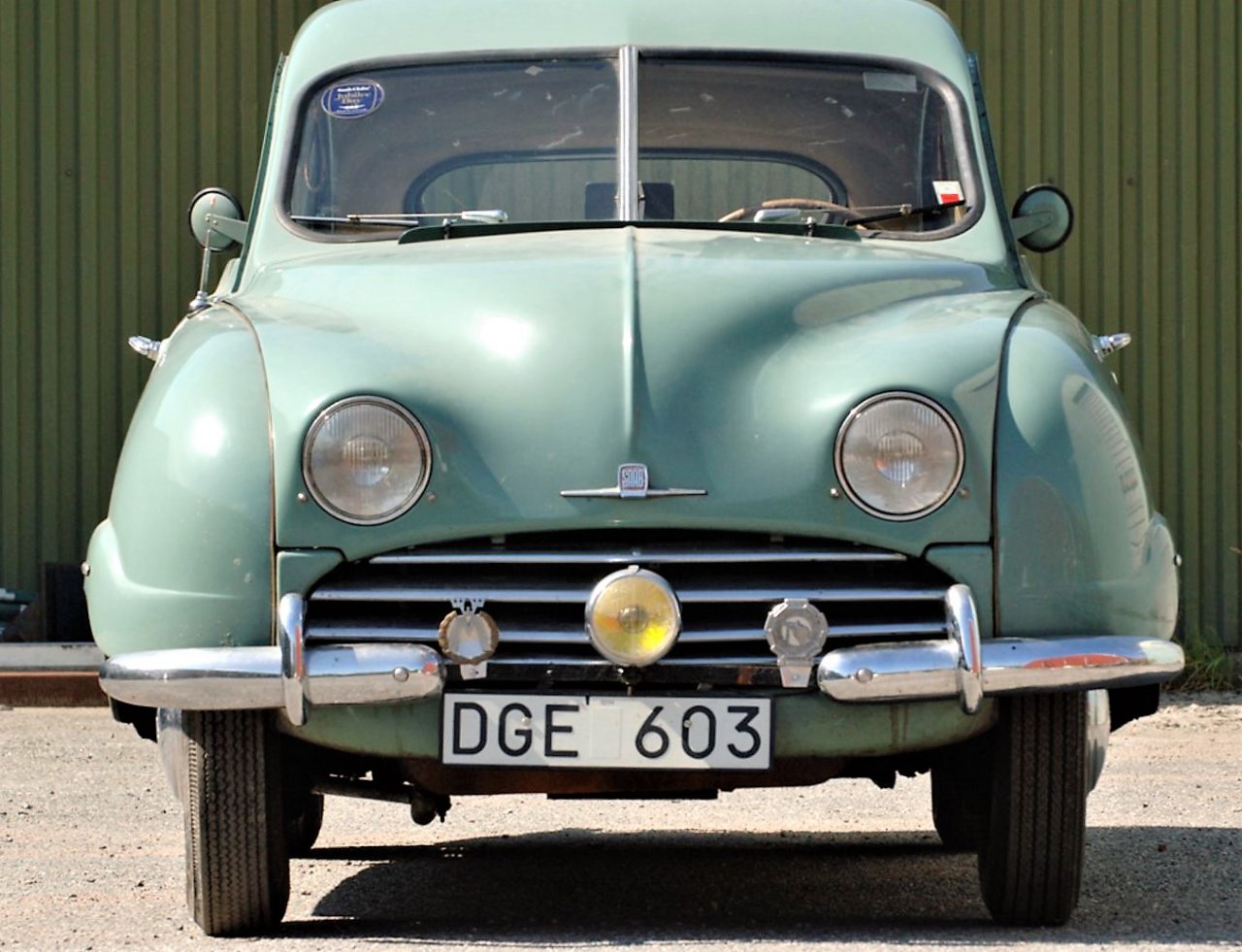
Power was provided by a then-innovative engine with 2 combustion cycles instead of 4 cycles, like a regular gasoline engine. There are no valves or oil sump, and the 2-cycle engine is basically constructed of just three moving parts. Special oil must be added to the gasoline to provide engine lubrication.
The engine is mounted transversely and fed its power through another then-unusual feature: front-wheel drive. Horsepower was rated at 25 for the 1,940-pound car.
This 92, which the auction company says spent many years on display in a dedicated owner’s living room, is said to run well and looks very intact for a 72-year-old car. Tattered upholstery, a section of mismatched repaint and a scrape on one flank are the only notable flaws seen in the auction photos.
The Saab’s paint color also has a story behind it.
“At first, the car was only available in the color Bottle Green, as SAAB had huge amounts of this color left over from aircraft manufacturing during World War II,” Bilweb notes in the release.
For more information, visit the auction website.



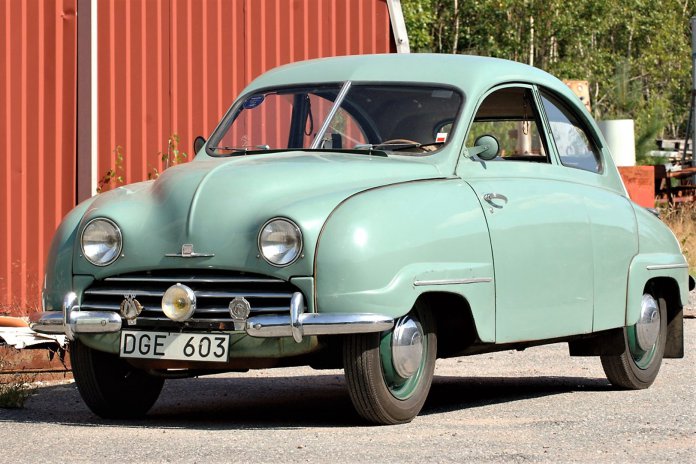


Nice.
The steering wheel sure looks like it’s from a Volvo PV.
And another one that brings back memories, only in this case it is the later editions of this car, the 95 and 96 series (1960-1980). After my little sister was born, we switched from Chargers to these things and I remember being somewhat confused as it seemed backwards to me. But these things were bulletproof! And we’re talking early to mid 80s here when the pinch was being felt at the pump; a family of five with gas guzzling monster V8s were much harder on the pocket than these 3 and 4 cylinder lightweights with a penchant for running no matter what they looked like. We always had at least 2 of these at any given time, we even had one that was a wagon, and another that was a convertible (which ended up on the side of the house and got nicknamed ‘the outdoor bathtub’ because the top wouldn’t go up so all the rain and snow of the year accumulated and stayed).
They weren’t much to look at but I noticed we were the only ones who had them. We still had the wagon in 1987 when I started high school; that was used as a third car for a time until it died. By then we had more than enough cars to go around, including a 66 Buick Wildcat that belonged to my great aunt that he was working on.
The car in the pictures and video is not the car mentioned in the article, it is a newer model 92B from the fifties